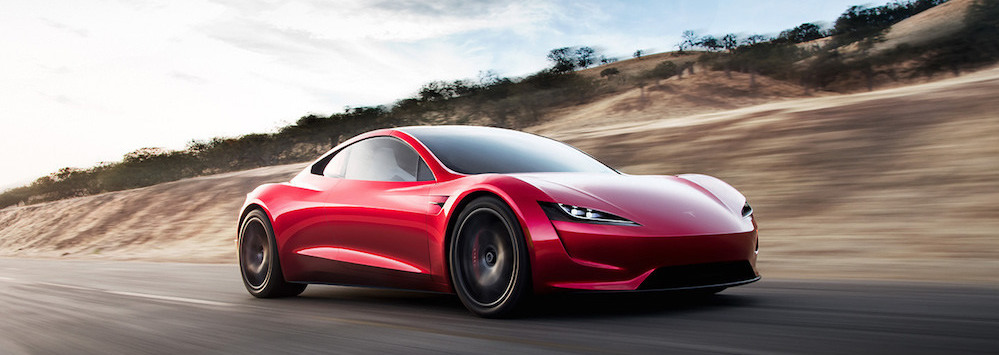By David Dodge and Kay Rollans
You may not see it on the streets of your town or city yet, but the world slipped past the tipping point for electric vehicles (EVs) sometime last year.
There is a photo of 5th Avenue in New York from 1900. It depicts a vibrant street, filled with horses and buggies. Then there is another photo, just 13 years later that shows all combustion vehicles and only one horse and buggy.

Well, we can’t show you a similar photo for electric vehicles, yet, but we can show you the numbers for automaker investment that will produce that photo in the very near future.
In 2019, Reuters reported 300 billion USD in global commitments to EV development over the next five to 10 years. Virtually every major automaker is investing everything in electric vehicles. More than 500 models of electric vehicles will be available by 2025.
“Everyone is involved. Everyone sees that this is the necessary course,” says Matthew Klippenstein, an electric vehicle (EV) commentator and analyst who once compiled Canada’s most thorough EV database agrees. “We do have a tipping point… in terms of automakers’ resources and commitments to electric to zero-emission technology going forward,” Klippenstein says he wouldn’t be surprised if, in 2020, investment will increase to nearly 500 billion USD.

Follow the money – Investment in EVs is taking off
Volkswagen—the world’s largest car manufacturer—had, until recently, thrown its hat in with the diesel camp. But then there was Dieselgate and it became clear these old technologies could not meet increasingly ambitious emissions policies in Europe and China. VW did an about-face. Now, it is the top investor in the EV rush.
Today Volkswagen, Porche and Audi are investing more than $90 billion in EVs and batteries
And other top automakers are hot on their tails.

“Ford recently said that…it was spending maybe 30 per cent of its R&D on electrification as opposed to combustion. Then that 30 per cent went to 70 per cent and they anticipate that 70 per cent going to 100 per cent in the not too distant future,” says Klippenstein.
Instead of producing obscure, alternative models Ford has now turned its attention to its signature models. The 2021 Mustang Mach-E has a range of 425 kilometers and it’s fast.
Globally, analysts expect about 700 models of electric cars on the market by 2025—that’s out of the roughly 1,000 models that are typically on the market at any given time.
“Perhaps by the time I retire…then it’ll basically be a largely electric lineup with a few sort of quaint combustion options are still available for purists,” Klippenstein quipped.

Climate policy driving markets
Strict emissions reduction policies and EV and low-emission vehicle incentives are putting pressure on automakers to think clean. Europe’s new targets, for example, aim to reduce vehicle emissions by 15 per cent by 2025, and between 30 and 37.5 per cent by 2030.
Copenhagen, like many global cities, has a climate change plan that calls for the banning of diesel cars from their streets by 2025 and gasoline fueled cars by 2030.

“Policy makers have started to flex their muscles,” Klippenstein said.
Some jurisdictions have even begun committing to eliminating the sale of combustion vehicles all together.
Norway, a country where cars have always been subject to high luxury and import taxes, has waved these fees for EVs. This incentivization has made the country one of the densest EV markets per capita in the world. Norway has committed to eliminating of combustion vehicle sales by 2025. In 2019 55 per cent of cars sold had a plug and by March 2020 75 per cent of sales were plug in models.
Britain and, in Canada, British Columbia have made similar commitments, aiming for 2040.
As car-focused climate policies ramp up, markets for EVs are growing, making EV production not only necessary, but profitable, for car manufacturers.
At the same time, as EVs become more ubiquitous and innovative, so do climate policies.
“We have this wonderful…self-reinforcing loop where the closer we can get to a situation of cheap batteries and widespread electrification, the more aggressive policymakers can be,” says Klippenstein.

Tesla? I think you mean F-150
EV uptake is happening rapidly. In 2012, when Klippenstein started tracking EV markets, there were only about 3,000 EVs on Canadian roads. Today, that number has ballooned to over 60,000.
Still, the EV market in North America is more challenging than, say, Europe or China, where compact, urban cars are the norm. “We like bigger cars,” says Klippenstein.
Bigger cars require bigger batteries, and bigger batteries increase costs. However, manufacturers are working together on EV development, building vehicles that work with the same vehicle charging infrastructure and creating economies of scale that reduce costs for both the producer and consumer.
What was once thought of as the sci-fi car of the wealthy, and strongly associated with Tesla is getting a new face—one that can cater to all market tastes.

High-performance, plug-in hybrid trucks and SUVs are already on or about to hit the market. Mitsubishi’s plug-in hybrid Outlander has been around for years. Toyota is planning on launching a plug-in hybrid RAV4 later this year. And perhaps most surprising of all, Ford is slated to launch a fully electric F-150—the top-selling vehicle in Canada and the United States—as early as next year.
“I’m anticipating the F-150…launch very much because…that’ll be a catalyst for changing the perception of electric vehicles so that it becomes more inclusive,” Klippenstein says.
“I’m very hopeful that we’ll go from this transformation where electric vehicles start off as this little sliver of a niche, and then they kind of get bigger and bigger and then they’re recognized as the solution for everyone.”
Amazon goes electric, buys the company
In 2019, Amazon not only ordered 100,000 fully electric commercial delivery vehicles from American EV start-up Rivian and they also invested in the company, a gamer changer for Rivian and for the market.
Commercial vehicle electrification is another growing trend. UPS has a fleet of plug-in hybrid delivery trucks on the horizon, and DHL has created its own start-up to develop a fleet of light-weight electric delivery vans.
Klippenstein predicts this trend will quickly become the norm: “Once we get the stage and where we’re at that stage now, really where the commercial vehicles, the electric ones are cheaper on a total cost of ownership basis than combustion vehicles, then we expect to see a rapid switch from virtually zero new market share to virtually 100 percent new vehicle market share.”

Challenges certainly remain. While curbing transportation greenhouse gas emissions (which account for about 15 per cent of emissions worldwide) is a huge step, electricity production in many jurisdictions—including Alberta—is still fossil fuel dependent. Globally, electricity accounts for about 31 per cent of greenhouse gas emissions.
And although we knew this was coming, grids will need to adapt and fast. A study by a local power company in Edmonton, Alberta found neighbourhoods could handle a couple of electric vehicles, but the third one is going to be a problem.
Electric vehicles are both a big problem for grids and part of the solution for the future of renewable energy. Policies will need to change faster than grid infrastructure to adapt. By treating the batteries of millions of vehicles as an energy storage tool grid managers could manage when these vehicles charge to handle more EVs and get more renewable energy on the grid.
Moreover, the reliability of EVs depends on wide-spread EV infrastructure like charging stations, and on more advanced technologies that will allow for longer-distance traveling.
But the ubiquity of EV development in the auto industry is one of the latest signals that we’re in the midst of a sea-change in global markets. Klippenstein is optimistic that change is just around the corner.
“Many years ago [it] was a tiny little snowball and now it’s this massive, massive avalanche helping us to hopefully soon start bringing down our carbon emissions.”
Matthew Klippenstein is an engineer, consultant, and electric vehicle (EV) commentator and analyst. He tracks EV market data on his website CanadaEVsales.com and tweets @ElectronComm.





